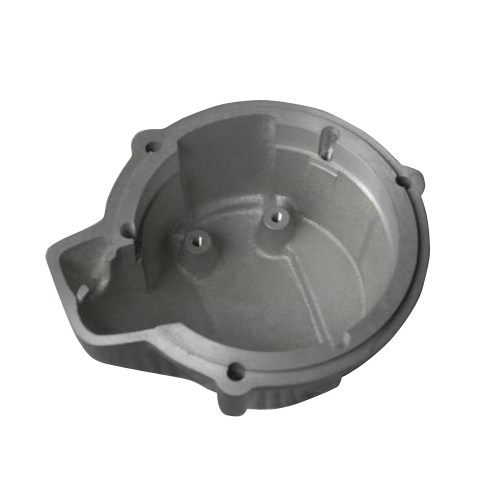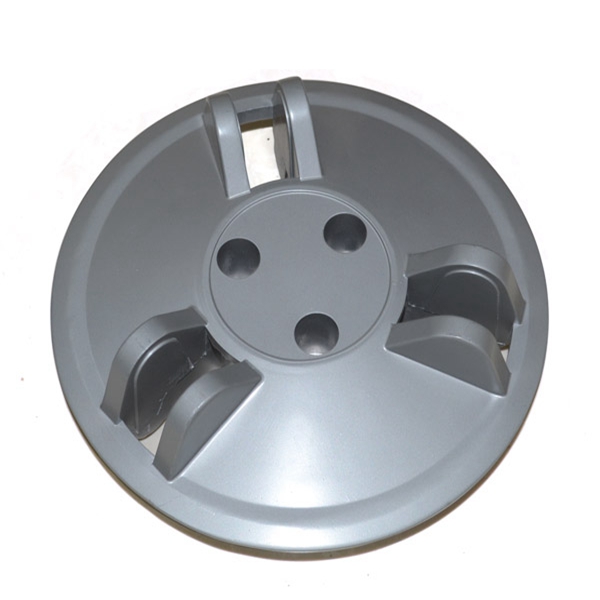Cast iron tee process and technical requirements
Cast iron tees are made of cast iron, stainless steel, alloy steel, calcinable cast iron, carbon steel, etc. The way to connect with the pipe is: direct welding (the most common way) flange connection, threaded connection with socket connection. A connecting pipe commonly used in pipe installation for connections outside the pipe.
First, the classification of cast iron tees
Classification of cast iron tees: reducer tee, Y-type tee, high pressure tee, etc.
1. Divided into materials: carbon steel, cast steel, alloy steel, stainless steel, copper, aluminum alloy, etc.
2, divided by production methods can be divided into: push, pressing, forging, casting and so on.
Second, the process of cast iron tee
A cast iron tee is a type of pipe used at the branch of a pipe. For the production of cast iron tees using seamless tubes, the current processes commonly used are hydraulic bulging and hot forming.
Hydraulic bulging
The hydraulic bulging of a cast iron tee is a forming process in which the branch pipe is expanded by axial compensation of the metal material. The process is to use a special hydraulic machine to inject liquid into the tube blank equal to the diameter of the cast iron tee, and simultaneously press the two horizontal side cylinders of the hydraulic machine to press the tube blank synchronously, and the volume of the tube blank becomes smaller after the tube blank is pressed. The liquid in the liquid becomes smaller as the volume of the tube blank becomes smaller, and when the pressure required for the expansion of the cast iron tee branch pipe is reached, the metal material flows along the cavity of the mold and expands under the double action of the liquid pressure in the side cylinder and the tube blank. Branch pipe.
The hydraulic bulging process of the cast iron tee can be formed at one time, and the production efficiency is high; the main pipe and the shoulder wall thickness of the cast iron tee are increased.
Due to the large tonnage of equipment required for the hydraulic bulging process of seamless cast iron tee, it is mainly used in the manufacture of standard wall thickness cast iron tees smaller than DN400. The suitable forming materials are low carbon steel, low alloy steel and stainless steel with relatively low cold work hardening tendency, including some nonferrous metal materials such as copper, aluminum and titanium.
b. Hot press forming
Cast iron three-way hot press forming is a tube blank larger than the diameter of the cast iron tee, which is flattened to a diameter of the cast iron tee, and a hole is opened in the portion of the stretched branch pipe; the tube blank is heated and placed in the forming mold, and A die of a tensile branch pipe is placed in the tube blank; the tube blank is radially compressed under the action of pressure, and the metal flows toward the branch pipe during the radial compression and forms a branch pipe under the drawing of the die. The entire process is formed by the radial compression of the tube blank and the stretching process of the branch portion. Different from the hydraulic bulging cast iron tee, the metal of the hot-pressed cast iron tee branch is compensated by the radial movement of the tube blank, so it is also called the radial compensation process.
Due to the use of heated cast iron tees, the tonnage required for material forming is reduced. Hot-pressed cast iron tee has wide adaptability to materials and is suitable for low carbon steel, alloy steel and stainless steel materials; especially for cast iron tees with large diameter and thick wall, this forming process is usually used.
Third, the technical requirements of cast iron tee
Cast iron tee fittings are produced in accordance with certain process methods and principles, ensuring good production quality and guarantee in actual production and processing. Geometric dimensions include outer diameter, inner diameter and wall thickness. It is the requirement for packaging. For small pipe fittings, such as export, it is necessary to make wooden boxes, about 1 cubic meter. The number of elbows in such boxes is not more than one ton. The standard allows suits, that is, large sets, but The total weight cannot generally exceed 1 ton. For large pieces, a single package, like 24 inches, must be packaged individually. The other is the packaging mark, which is to indicate the size, steel number, batch number, and manufacturer's trademark. The cast iron tee fittings shall be stamped with documents such as packing list and warranty. It is also required to control the radius of curvature. For example, if the radius is 1.5D, the radius of curvature must be within the required tolerance. Since most of these pipe fittings are used for welding, in order to improve the quality of the welding, the ends are all turned into bevels, leaving a certain angle with a certain edge. This requirement is also stricter, how thick the edges are, what the angle is and the range of deviation. There are provisions, the geometry is much more than the pipe fittings. The surface quality and mechanical properties are basically the same as the tube. For the convenience of welding, the steel grade of the pipe to be connected is the same. That is, all the three-way pipe fittings are subjected to surface treatment, and the iron oxide skin on the inner and outer surfaces is sprayed by shot blasting, and then coated with anticorrosive paint. This is not only for export needs, but also for the purpose of facilitating transportation to prevent corrosion and oxidation in the country.
If the elbow pipe is inverted, if you want to make a long radius elbow, first, you must first select the specifications and propose the pipe material. It can be calculated by theoretical calculation, and then cut with the length as a fixed length. Finally, the material is hot pushed. The pusher may have been seen by everyone, and the actual situation is very simple. It is a horn-shaped core or mandrel, the mandrel is thickened and thinned, and the pushing process is a process of bending the expanding belt. There is support at the back, the cutting pipe section is inserted into the mandrel, and there is a arch frame at the back to fix the mandrel. There is a small car in the middle, some of the cars are driven by hydraulic pressure, some are driven by mechanical transmission, that is, screw drive, and then push the trolley forward. The trolley pushes the tube forward along the mandrel. There is an induction coil outside the mandrel. The tube is heated and heated. Then the trolley pushes the tube down and processes one. After the push, the elbow is shaped in this hot state. The expansion rate, through theoretical calculations, is generally between 33% and 35%, and is pushed back. The general diameter expansion ratio of a short radius of 219 mm is 50%. After selecting the raw materials, the material is cut according to the elbow specification, and then the radius of curvature is considered. For example, the 90° elbow can be used to calculate the elbow of 90° when the long material is processed.
The process of cast iron tee is also basically the same. It is necessary to cut according to different specifications of cast iron tee fittings. After the material is to be blasted, the surface of the scale should be removed before forming. Forming is formed by hydraulic bulging. There is a mold, the bottom of the mold is straight, and there is a flange hole on the upper side. After the tube is placed, the tube is fixed by a hydraulic cylinder, and the liquid is filled inwardly on both sides, and the tube is extruded into a "convex" shape, and the protrusion is cut off from the proper position and also beveled. It has to be shot peened twice. Since work hardening occurs during processing, heat treatment is also required. These are the production processes for cast iron tee fittings.
High quanlity Aluminum die casting Auto/Motors parts
Automatic lathes and presses for our production.All surfaces are finished just as you have specified.
Our tool workshop, extrusion workshop, machined workshop, anodized workshop, packing workshop and sales will provide you all solutions of your products.
Using Machine:Die casting machine 120 ton -800 ton
Main Processes Flow(depends on part shape and requirement):
Drawing / or Samples →Mould making →Die casting →Deburring →Drilling and Tapping →CNC Machining →Polish →Surface treatment →Assembly →Quality inspection → Packing →Shipping
Production Flow:
Drawing/ or samples → Mould making →Die casting and other processes →Get samples and send samples to customer for confirm → Mass Production ( casual inspection avoid unintentional situation) → QC → Packing →Shipping →Cycle to next order
Surface Treatment (Optional by customer):
Polishing, Sandblasting, Painting, Powder coating, Galvanizing, Chrome plating
Anodizing , Real gold coating, Imitation gold.




Motor Box,Casting Motorcycle Parts,Alloy Motors,Motor Casting
Dongguan Hongge Hardware Technology Co., Ltd , http://www.honggecasting.com